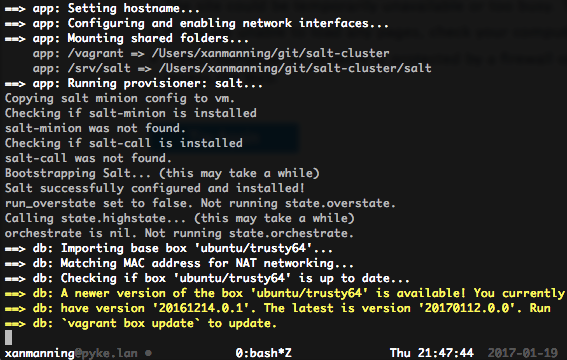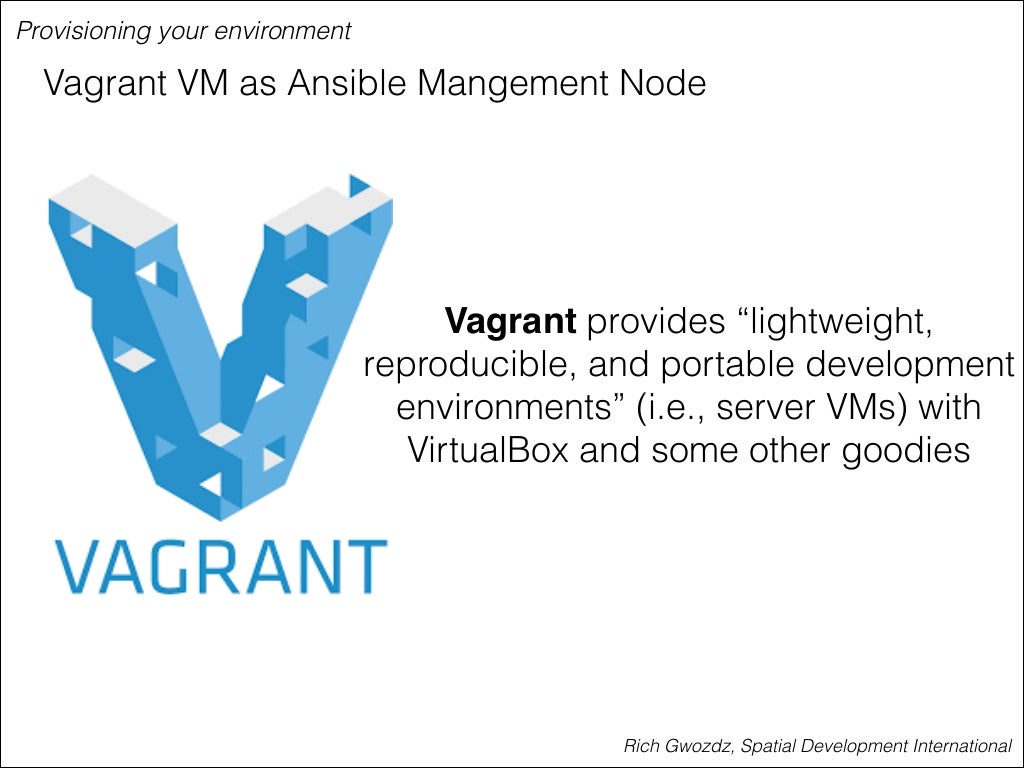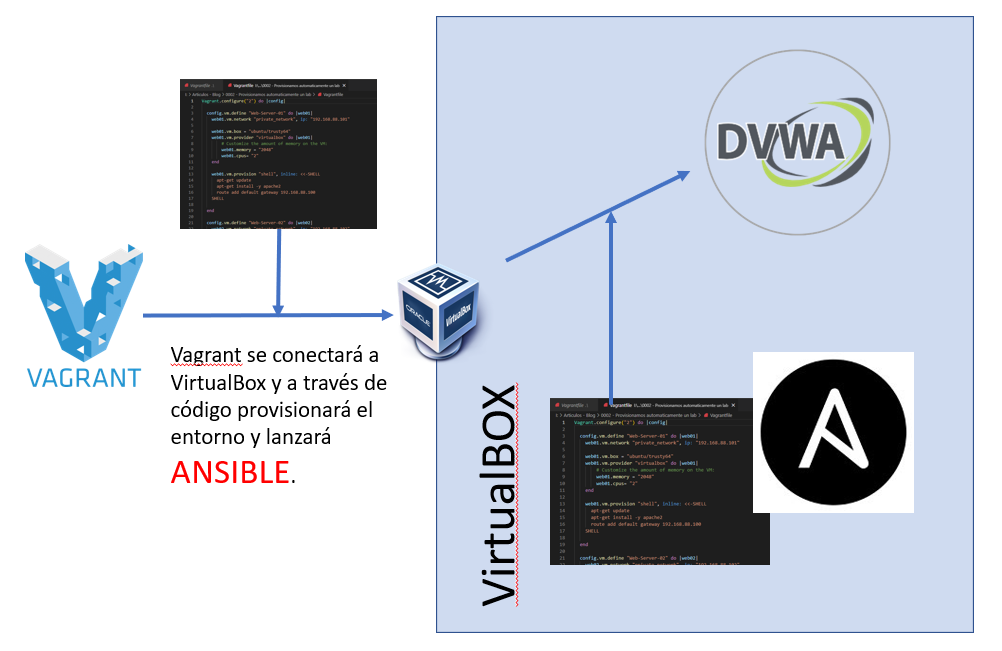
A centralized API that interacts with and integrates infrastructure components chef-solo runs locally and requires that a cookbook (and any of its dependencies) be on the same physical disk as the node.Ĭhef-solo is a limited-functionality version of the chef-client and does not support the following: The Vagrant Chef Solo provisioner allows you to provision the guest using Chef, specifically with Chef Solo.Ĭhef-solo is an open source version of the chef-client that allows using cookbooks with nodes without requiring access to a Chef server. We can just make simple modifications to the provisioning scripts on our machine, run a vagrant provision, and check for the desired results. This command is a great way to quickly test any provisioners, and is especially useful for incremental development of shell scripts, Chef cookbooks, or Puppet modules. For the most part it’s not advisable to run provisioners each time the VM comes up as it might well mess with the installation already present."The vagrant provision runs any configured provisioners against the running Vagrant managed machine. Vagrant can be instructed to run provisioners always if the use case merits it. Next time the VM is started by vagrant the Ansible playbook will be executed. There you go! I could have achieved the same by telling vagrant to provision the VM using the -provision flag but I’m sure I would have forgotten that half the time.Īnyone using Ansible can benefit from running provisioners always, too: nfigure("2") do |config|Ĭonfig.vm.provision "ansible", run: "always" do |ansible|Īaybook = "/path/to/ansible/playbook.yaml" Next time the vagrant VM starts, the provisioner marked as “run: always” will be triggered, even though the VM wasn’t created from scratch: $ vagrant up

#VAGRANT PROVISION UPDATE#
Inline: "sudo apt-get update -error-on=any & sudo apt-get dist-upgrade -y", To change the provision section to always run, simply tell it to: nfigure("2") do |config| All packages in this environment are DEBs. Looking at the command you may have guessed that this is a Debian-based VM, and I’m neither using Flatpack nor Snaps. Inline: "sudo apt-get update -error-on=any & sudo apt-get dist-upgrade -y" The above output was caused by the following directive: nfigure("2") do |config|

#VAGRANT PROVISION INSTALL#
The section detailing provisioners in my Vagrantfile is super simple because it has to run in Linux and Windows and I’m too lazy to install Ansible on my Windows box. Provisioners marked to run always will still run. Run `vagrant provision` or use the `-provision` Switching from on-demand provisioning to automatic provisioningĪs I said, VMs are provisioned once by default, subsequent starts won’t run the provisioners as you can see in the output: $ vagrant up For my sandbox browser VM though I want all packages to be updated automatically. If they were run each time it would probably be a disaster for all of my other Vagrant VMs. Provisioners thankfully do NOT run with each subsequent start of the VM. Vagrant provisioners can help with that.ĭefining one or more provisioners in the Vagrantfile is a great way to initially configure a VM when it is created for the first time and works really well. The one thing that’s necessary though is updating the VM, ideally performed automatically, at each start. Not perfect, and there are more secure ways, but I’m fine with my approach. This is the first step towards my solution: being able to create/tear down the sandbox. I started off by creating a small “browser” VM with a minimal GUI and a web browser – nothing else – and registered this system as a vagrant box. Please be super-careful when thinking of implementing a strategy where provisioners are run always, it can and potentially will break your system! For most use cases provisioning a VM each time it starts is not what you want. Security updates for the host O/S and hypervisor (read: Virtualbox) are crucial, too.

Whilst the solution presented in this article provides a more secure (notice how I didn’t claim this to be secure ) ) approach to web browsing it doesn’t keep the host up to date. My host runs Ubuntu 22.04 LTS, and I’m using Vagrant 2.2.19 (the one shipping with the distribution, it’s not the latest version!) as well as Virtualbox 6.1.40. Since I’m a great fan of both Virtualbox and Vagrant I decided to use the combination of the two to get this done. When I read that a commercial vendor for operating systems created a solution where a browser is started in a disposable sandbox that gets discarded when you exit the browser session I thought of ways to implement this feature myself. Since Spectre and Meltdown (2 infamous side channel attack vectors on CPUs) have become public I thought about better, more secure ways to browse the web.


 0 kommentar(er)
0 kommentar(er)
